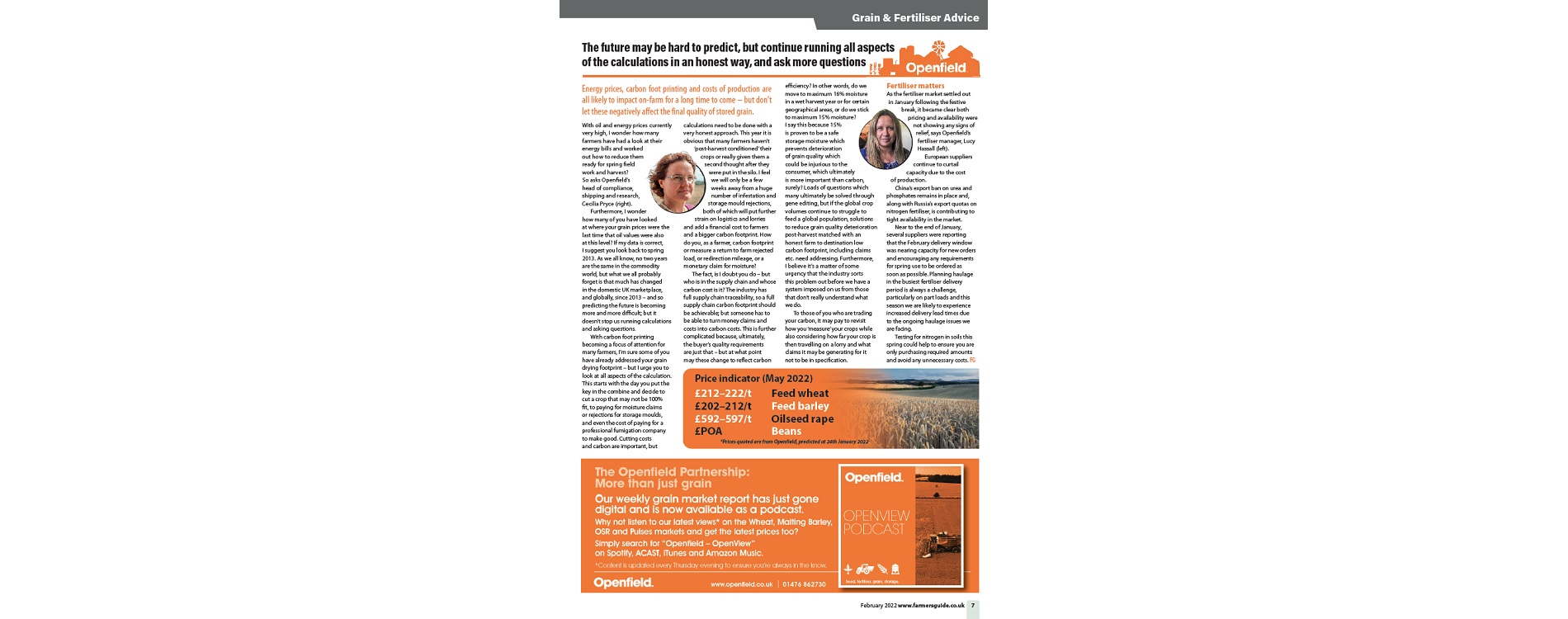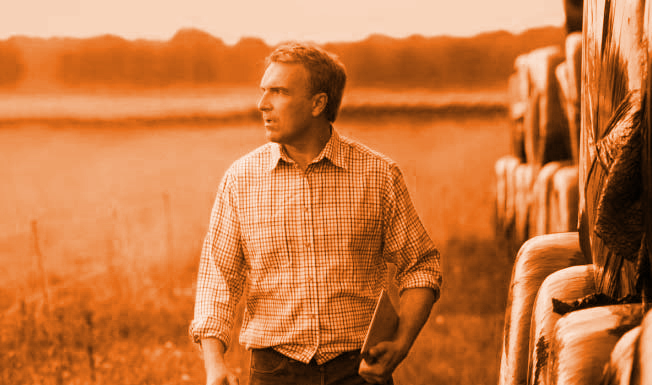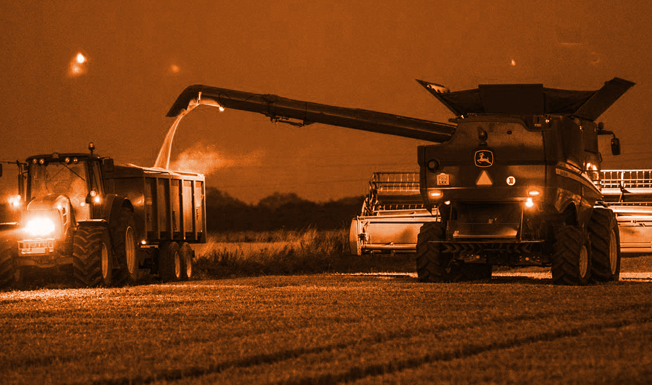The future may be hard to predict, but continue running all aspects of the calculations in an honest way, and ask more questions
Energy prices, carbon foot printing and costs of production are all likely to impact on-farm for a long time to come – but don’t let these negatively affect the final quality of stored grain.
With oil and energy prices currently very high, I wonder how many farmers have had a look at their energy bills and worked out how to reduce them ready for spring field work and harvest? Furthermore, I wonder how many of you have looked at where your grain prices were the last time that oil values were also at this level? If my data is correct, I suggest you look back to spring 2013. As we all know, no two years are the same in the commodity world, but what we all probably forget is that much has changed in the domestic UK marketplace, and globally, since 2013 – and so predicting the future is becoming more and more difficult; but it doesn’t stop us running calculations and asking questions.
With carbon foot printing becoming a focus of attention for many farmers, I’m sure some of you have already addressed your grain drying footprint – but I urge you to look at all aspects of the calculation. This starts with the day you put the key in the combine and decide to cut a crop that may not be 100% fit, to paying for moisture claims or rejections for storage moulds, and even the cost of paying for a professional fumigation company to make good. Cutting costs and carbon are important, but calculations need to be done with a very honest approach. This year it is obvious that many farmers haven’t ‘post-harvest conditioned’ their crops or really given them a second thought after they were put in the silo. I feel we will only be a few weeks away from a huge number of infestation and storage mould rejections, both of which will put further strain on logistics and lorries and add a financial cost to farmers and a bigger carbon footprint. How do you, as a farmer, carbon footprint or measure a return to farm rejected load, or redirection mileage, or a monetary claim for moisture?
The fact, is I doubt you do – but who is in the supply chain and whose carbon cost is it? The industry has full supply chain traceability, so a full supply chain carbon footprint should be achievable; but someone has to be able to turn money claims and costs into carbon costs. This is further complicated because, ultimately, the buyer’s quality requirements are just that – but at what point may these change to reflect carbon efficiency? In other words, do we move to maximum 16% moisture in a wet harvest year or for certain geographical areas, or do we stick to maximum 15% moisture? I say this because 15% is proven to be a safe storage moisture which prevents deterioration of grain quality which could be injurious to the consumer, which ultimately is more important than carbon, surely? Loads of questions which many ultimately be solved through gene editing, but if the global crop volumes continue to struggle to feed a global population, solutions to reduce grain quality deterioration post-harvest matched with an honest farm to destination low carbon footprint, including claims etc. need addressing. Furthermore, I believe it’s a matter of some urgency that the industry sorts this problem out before we have a system imposed on us from those that don’t really understand what we do.
To those of you who are trading your carbon, it may pay to revisit how you ‘measure’ your crops while also considering how far your crop is then travelling on a lorry and what claims it may be generating for it not to be in specification.
Fertiliser matters
As the fertiliser market settled out in January following the festive break, it became clear both pricing and availability were not showing any signs of relief. European suppliers continue to curtail capacity due to the cost of production. China’s export ban on urea and phosphates remains in place and, along with Russia’s export quotas on nitrogen fertiliser, is contributing to tight availability in the market.
Near to the end of January, several suppliers were reporting that the February delivery window was nearing capacity for new orders and encouraging any requirements for spring use to be ordered as soon as possible. Planning haulage in the busiest fertiliser delivery period is always a challenge, particularly on part loads and this season we are likely to experience increased delivery lead times due to the ongoing haulage issues we are facing.
Testing for nitrogen in soils this spring could help to ensure you are only purchasing required amounts and avoid any unnecessary costs.




